- Seasoned wood is firewood with a moisture content below 20%, which is the EPA standard (Source)
- High moisture content means more firewood popping
- Generally, seasoned wood costs $240-285 a cord, depending on the time of year
- Experts recommend purchasing a moisture meter to test the firewood before you invest in a winter’s worth
- If you need to season moist wood fast, this Redditor stacks them in a basement near a wood heater, a circulating fan, and a dehumidifier set to 40%
- He says it dries down in about a week (learn more about whether firewood goes bad)
The dramatic light from the fire mixed with the warmth from the flames that glowed, create a sense of peace and well-being.
Soothing scents of crisp winter air, warmth of fire covering us, comfort sitting on the sofa.
A roaring fireplace can be lovely stuff. But only if you choose the right, seasoned wood!
There are numerous advantages to burning seasoned wood, which you can learn about in the sections below.
Many people prefer to season their firewood in addition to purchasing it from suppliers, whether it’s to serve as a backup or a primary source. Find out what seasoned firewood is and why you need to use it.
Contents
- What is seasoned firewood?
- Reasons to season firewood
- How to tell if the wood is seasoned
- Difference between seasoned and unseasoned firewood
- How to season your firewood
- Set up your log store
- The second step is to cut your logs.
- Check your stove if it can handle a log that’s about 16 inches long.
- Building a firewood stack
- Preparing your logs for use
What is seasoned firewood?
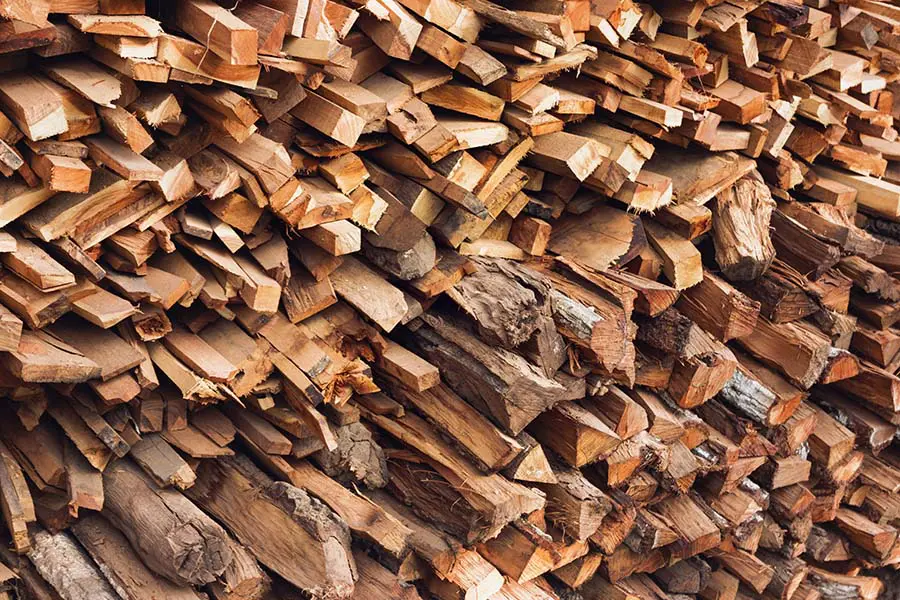
The term “seasoned wood” refers to wood that has been adequately dried. A minimum of six months of drying time is required for wood harvested from your property and stored in a dry location.
If you have the patience to wait, that’s a great option. Kiln-dried wood is the best option if you need it within six months.
The seasoning process can be used to lower the moisture content of firewood so that it doesn’t cause problems when burned.
On the other hand, dry firewood is wood that has been dried to an approximate moisture content of 20 percent or less.
On the other hand, Greenwood has moisture content more significant than 60% and is the antithesis of seasoned wood. It takes at least six months for properly seasoned firewood to be ready for use.
Pro Tip: Try installing a fireplace blower kit if you want to increase the heating efficiency of your fireplace
Reasons to season firewood
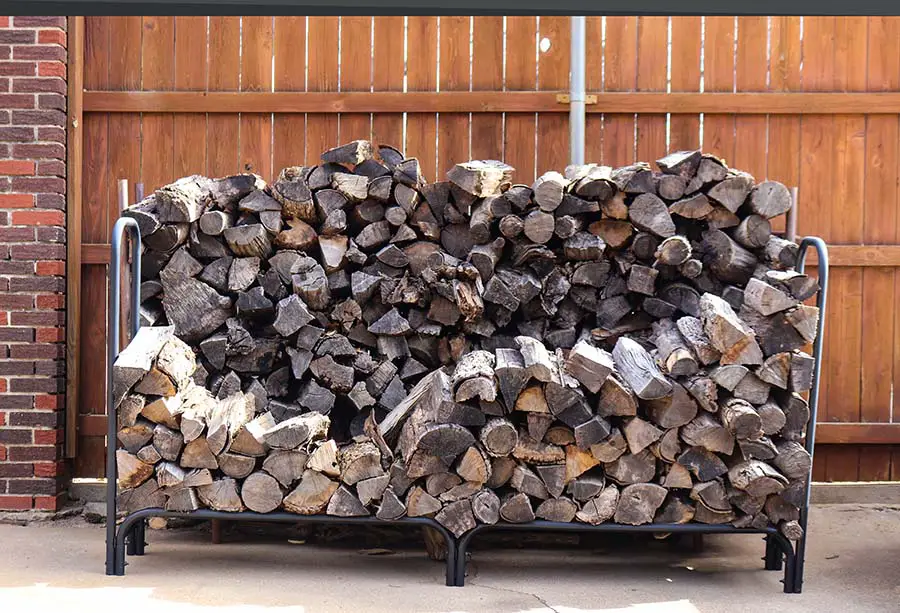
Firewood drying and burning has been practiced for centuries, and there are numerous reasons for this. Unseasoned wood has several drawbacks, some dangerous, while others are merely inefficient.
- Greenwood burns at a temperature 20 percent lower than that of seasoned wood.
- There are no internal moistures or sap left in the logs, lighting them straightforwardly.
- It’s also got a higher BTU content, so it burns for longer and stays lit easier.
- An exciting way to spend time with loved ones is around a roaring fire that has been properly seasoned.
- Green firewood doesn’t burn and requires more effort to maintain a consistent flame.
- With less wood needed per fire and a longer burn time, seasoned wood is a more economical option.
- To determine whether or not an item’s moisture content has decreased, it’s best to lift it and see if it feels light or heavy.
- On the other hand, seasoned firewood tends to have a lower moisture content than green logs, which means that it doesn’t require as much time to be prepared before use.
Using unseasoned wood will also increase the amount of smoke your fire produces as it attempts to expel moisture. A buildup of creosote in your chimney is a typical result of this smoke. As a side effect, the glass on your stovetop will blacken much more quickly.
Burning unseasoned wood not only pollutes your chimney and stove, but it can also harm the environment and your health through the pollution it releases into the air.
When you season your firewood, you allow it to dry out for some time before using it. As a result, it burns as cleanly and efficiently as possible when placed on a fire. As a result, the environment and the air we breathe will be kept cleaner and cleaner.
How to tell if the wood is seasoned
- When selecting a tree, look for a pale colour with visible cracks and easily removable bark.
- Seasoned wood should feel light in weight when it is dry.
- To get a more transparent sound, you should tap two logs together instead of tapping the wood.
You can also purchase a moisture meter to measure the wood’s water content more accurately. A few readings from a few sample logs should be taken, and the moisture content should be less than 20% for best results when using one of these.
The maximum moisture content for firewood should be 25% at all times.
Difference between seasoned and unseasoned firewood
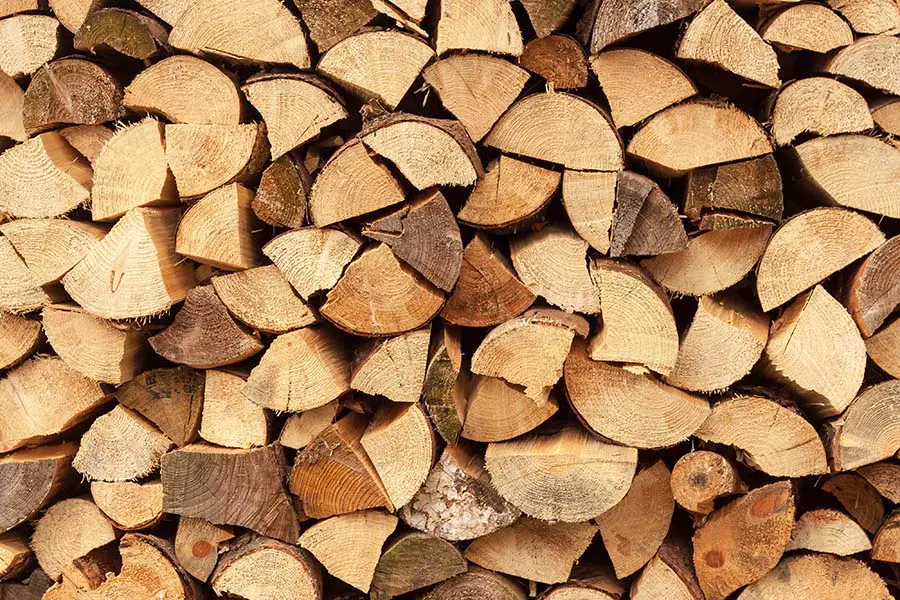
The term “green” refers to wood that has not yet been dried out. As a result, it still retains a significant amount of moisture in the form of sap and its cells.
Freshly chopped wood contains approximately 50% water. When the moisture content of a piece of firewood falls below 20%, it is considered fully seasoned. To properly season your firewood, you’ll need a lot of time and patience to do so.
As soon as the tree is down, cut and stack the wood to ensure it is adequately seasoned. Afterwards, it must be stored in a dry place for at least a year before being used for cooking. If you’re lucky, you’ll be able to get moisture content below 20%.
As a reminder, “green” isn’t just referring to the firewood’s colour. During the seasoning process, your firewood will lose its green colour, but that doesn’t mean the moisture content is low enough for a great experience near your firepit.
How to season your firewood
Set up your log store
Logs need to be seasoned in the right place. It must be rainproof while still allowing for adequate air circulation. To expedite the process, it’s best if it gets some sunlight, but this isn’t as critical as good air circulation – without it, mould can grow.
Those who prefer to store their firewood in a wooden or metal log store are available for purchase.
The second step is to cut your logs.
Full logs take longer to dry out than chopped wood. A tree stump or soft ground will not damage your axe if you need to split yours on its end. Keep in mind the size of your stove when deciding on the appropriate piece size for your fire logs.
Check your stove if it can handle a log that’s about 16 inches long.
If you have a limited time to season your wood, consider using smaller pieces. The ideal thickness is between 6 and 8 inches, but this may need to be adjusted based on the size of your stove.
Building a firewood stack
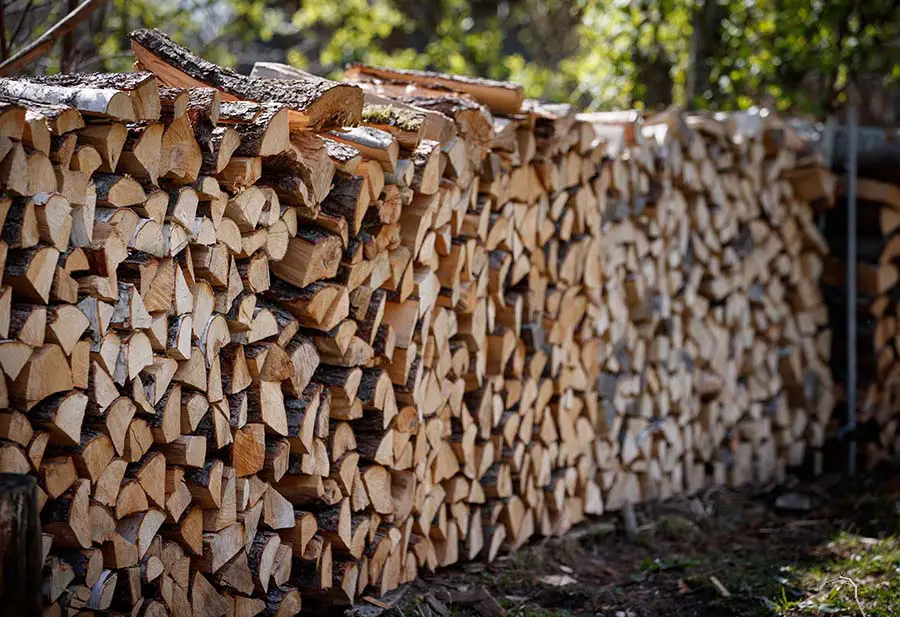
You can begin stacking your firewood in your log store once it’s been chopped and ready to be seasoned. You can stack your wood in a few different ways. Take advantage of the space you have available while still allowing for adequate airflow for your fire.
Keep the airs moving by not stacking them on top of each other. Instead, the base should be made from a pallet or a few longer pieces of wood. Once you’ve stacked your logs to a height of about a torso’s height, you can begin burning them.
As a rule, your stack should be no more than one log thick; otherwise, rot and insects will have an easier time getting in and out of your logs.
Preparing your logs for use
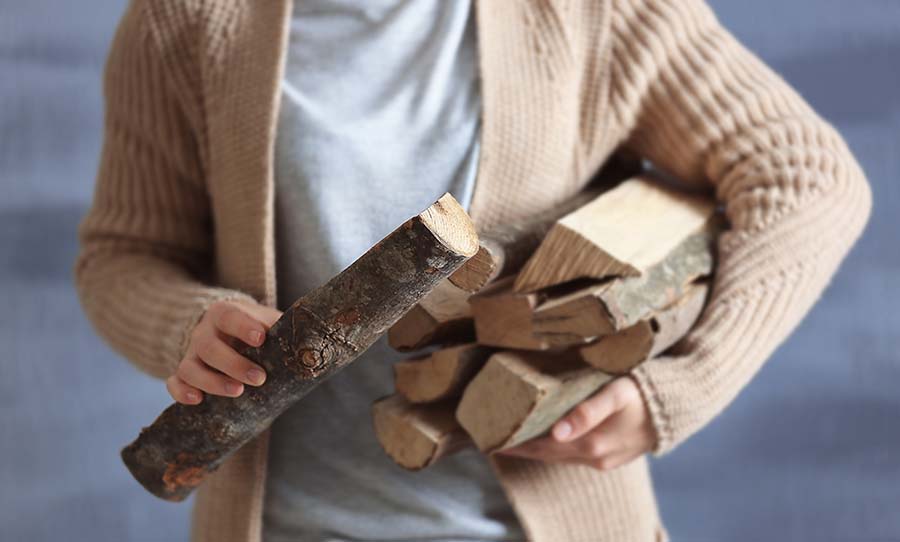
Here, the work is almost completed. They should be able to care for themselves during periods of dry weather.
You can cover them with a tarp if it’s raining heavily. Constant condensation can occur if the air cannot get to the wood.
When covering them, do so sparingly and not to the ground – cover the top of them with a piece of material. Avoid placing the cover over them. Make sure to re-cover them once the rain has stopped.
